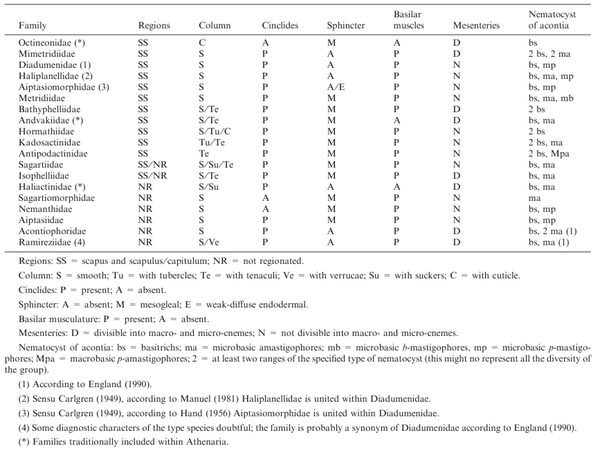Evolution & Systematics
As this specimen contains acontia, it can be assumed that it belongs to the group of ‘acontiate families’. Rodriguez et al. (2012) provide a tabular key to be able to differentiate specimens into families, however, due to the low quality of the specimen preservation, it has not been possible to identify the specimens to anything below Order. The paper goes on to look at the current structure of the phylogenetic tree in relation to the acontiate families and has suggested some changes based on genetic studies (Rodriguez et al. 2012). This is in addition to a study conducted across the class Anthozoa by Won et al. (2002) where they created phylogenetic trees based on rDNA including three families of order Actiniaria, one of which is an acontiate family. Phylogenetic studies on class Anthozoa are numerous due to the high morphological differences within the class, which highlights the high complexity of classifying within not only the class, but within the order Actiniaria.
|
Tabular key of traditionally used morphological characters of acontiate families. (Rodriguez et al. 2012)
|

|
|